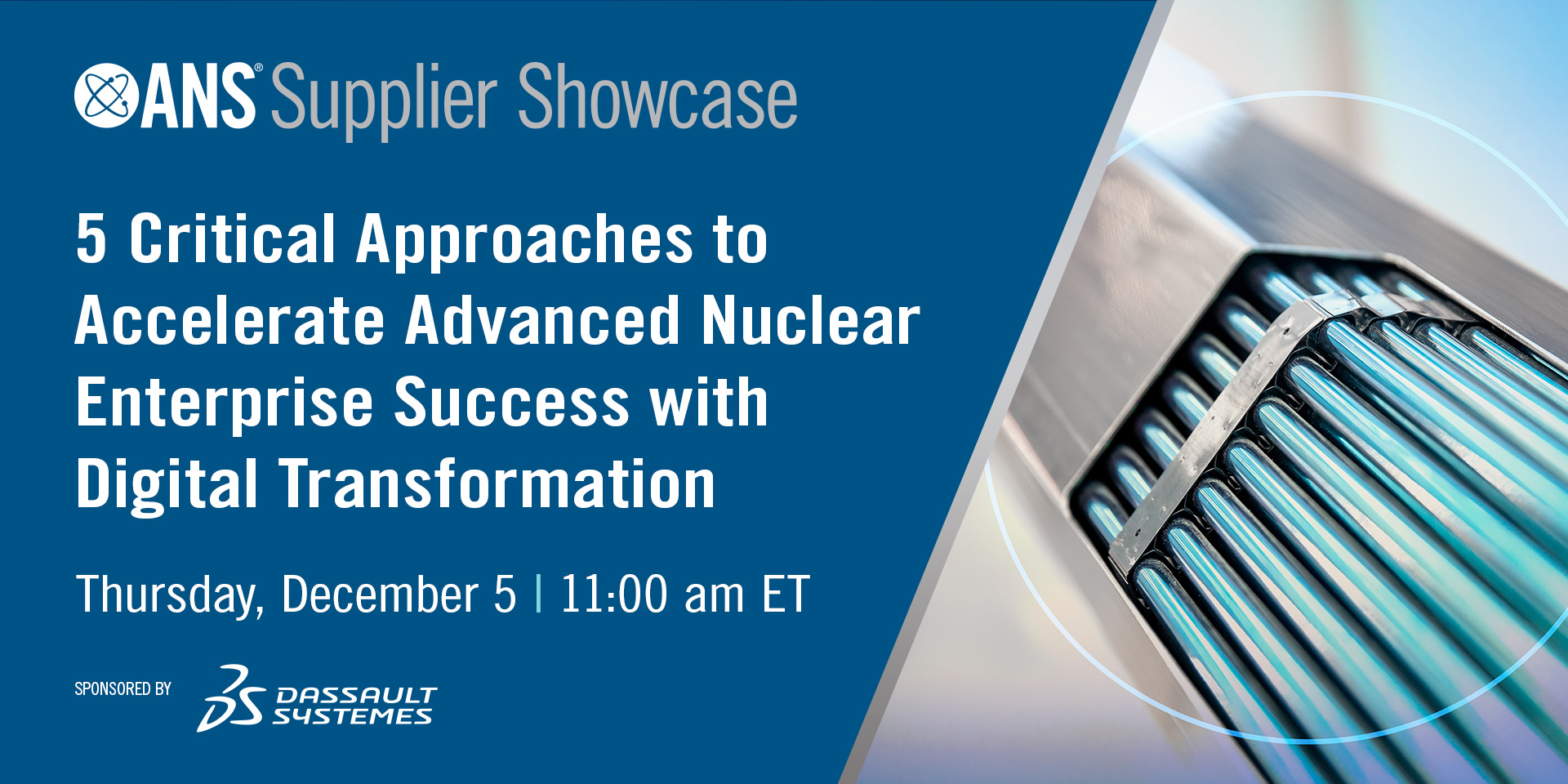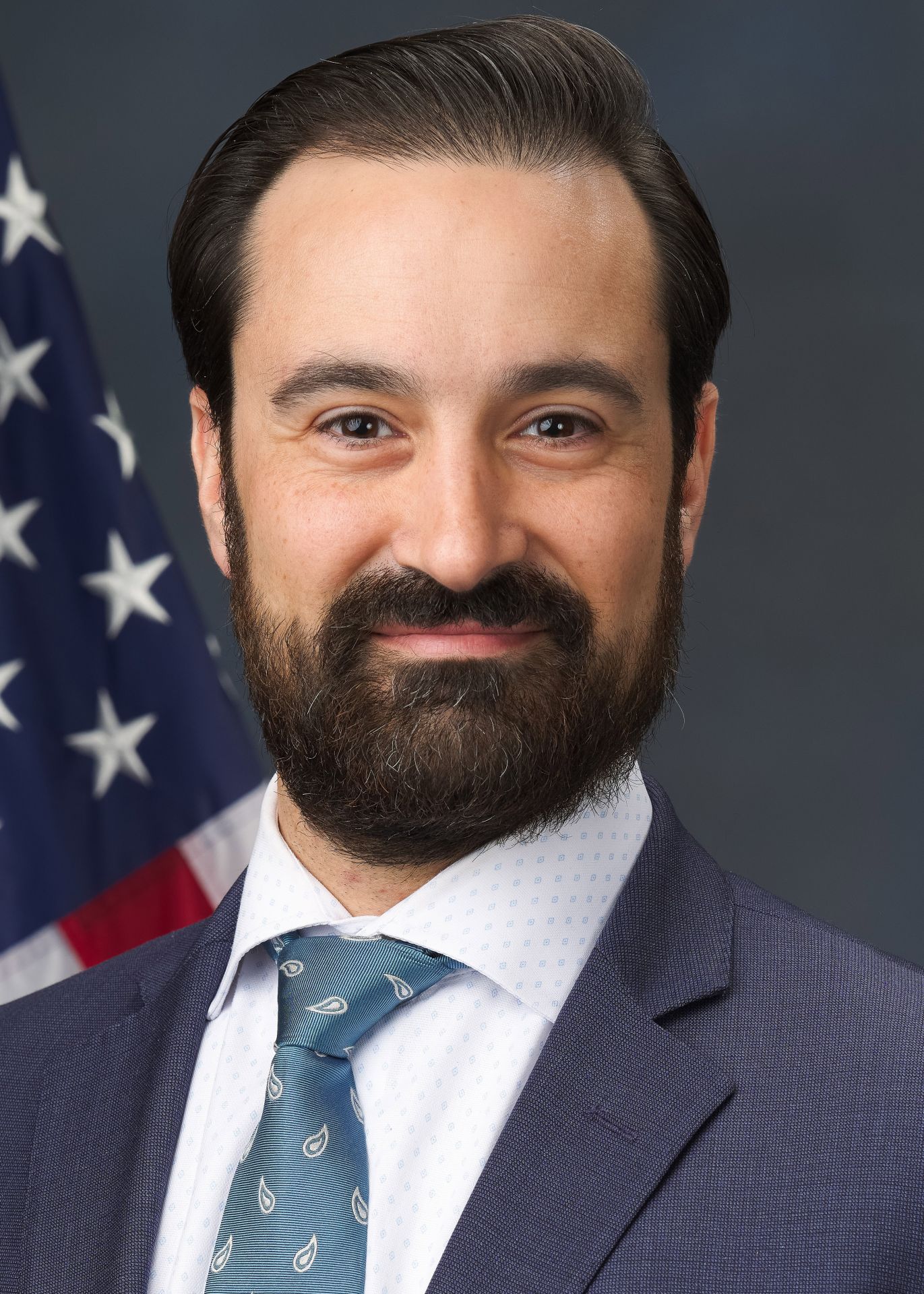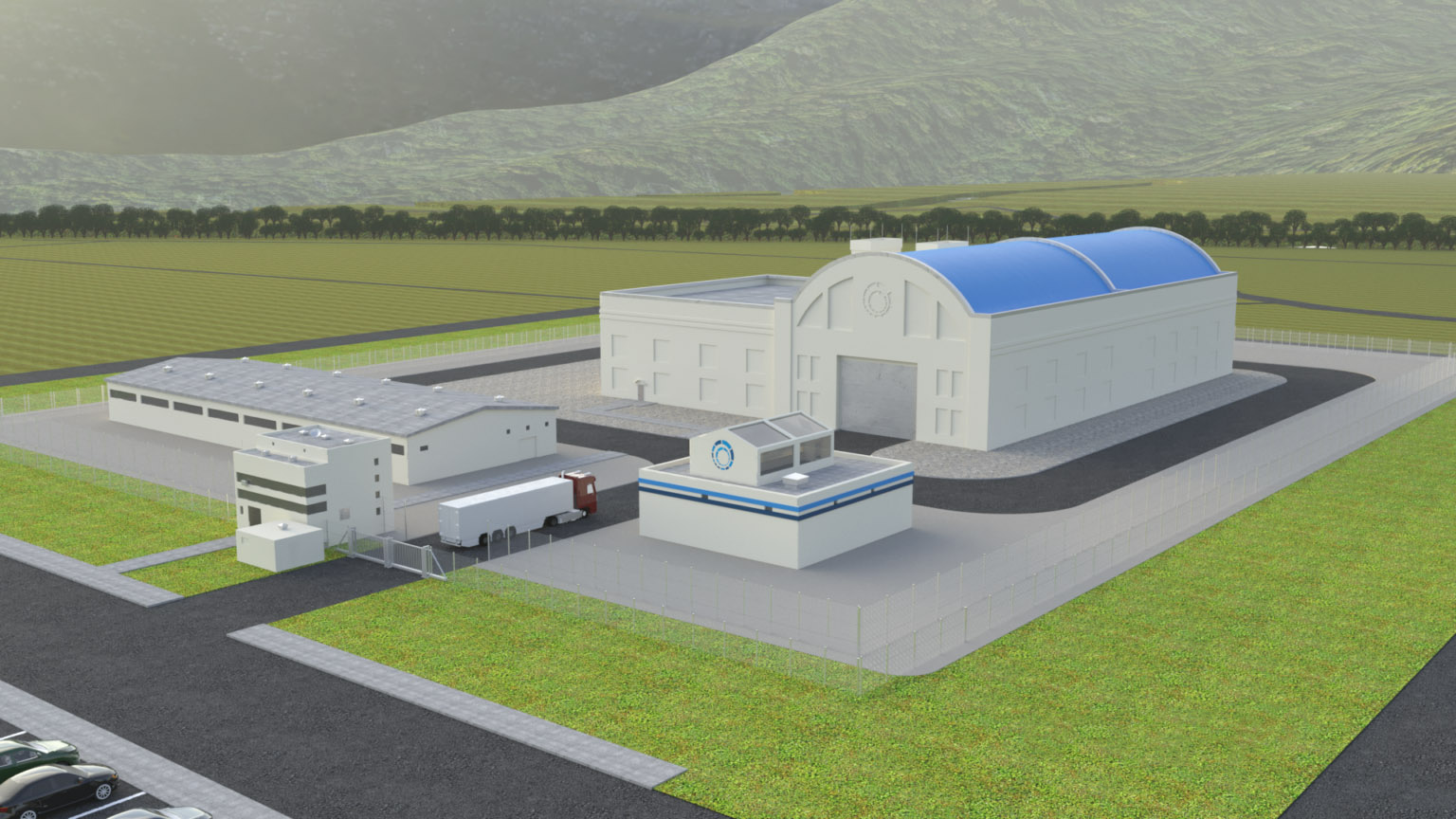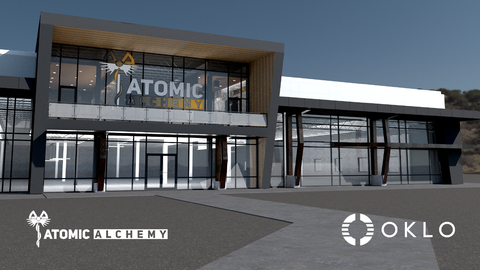ANS’s COP29 Week 1 delegation were, from left, Gale Hauck, Shirly Rodriguez, Lisa Marshall, and Seth Grae, pictured here with WNA director general Sama Bilbao y León (center). (Photo: Seth Grae)
COP29 was good for nuclear energy, but not so good for anything else.
That was one of Seth Grae’s takeaways from this year’s Conference of the Parties—or, United Nations Framework Convention on Climate Change (UNFCCC)—held for two weeks in November in Baku, Azerbaijan. Grae, chief executive of Lightbridge Corporation and chair of the American Nuclear Society’s International Council, attended with four other ANS delegates: ANS President Lisa Marshall, Gale Hauck, Shirly Rodriguez, and Andrew Smith.
The Flyability Elios 3 model drone for the SRS tank inspection program. (Photo: SRS)
The Department of Energy’s Office of Environmental Management will soon, for the first time, begin using drones to internally inspect radioactive liquid waste tanks at the department’s Savannah River Site in South Carolina. Inspections were previously done using magnetic wall-crawling robots.
Fig. 1. Oppenheimer hosting a gathering in his Bathtub Row house in Los Alamos.
The July 2024 issue of Nuclear News focused on fusion. Editor-in-chief Rick Michal highlighted in his column (p. 4) Los Alamos National Laboratory’s open access special issue of the American Nuclear Society journal Fusion Science and Technology, titled The Early History of Fusion. This article provides a brief summary of the issue—and we encourage readers to explore all of the full papers.a
Argonne director Paul Kearns, undersecretary of state for arms control and international security Bonnie Jenkins, EPRI chief nuclear strategy officer Neil Wilmshurst, and DOE acting assistant secretary for nuclear energy Michael Goff spoke at COP29 in Baku, Azerbaijan. (Photo: PNNL/Nazar Kholod)
Argonne National Laboratory will play a leading role in planning and rebuilding a nuclear-generated clean energy infrastructure for postwar Ukraine as part of the lab’s focus on developing small modular reactor applications to help countries meet energy security goals. The latest plans, described in a November 19 article, were announced on November 16 at COP29 in Baku, Azerbaijan.
A subset of the Deimos experiment team. (Photo: LANL)
Los Alamos National Laboratory researchers have performed a critical experiment using high-assay low-enriched uranium (HALEU) TRISO fuel. It is the nation’s first criticality safety experiment using HALEU fuel in more than 20 years. On November 21, LANL announced the work of its Deimos team, which earlier this year carried out an experiment at the National Criticality Experiments Research Center (NCERC), operated by LANL at the Nevada National Security Site.
A rendering of a data center powered by Radiant's Kaleidos microreactors (shown in the foreground). (Image: Ryan Seper)
Radiant Industries has announced a $100 million Series C funding round to be used primarily to complete its Kaleidos Development Unit (KDU) microreactor for testing in Idaho National Laboratory's Demonstration of Microreactor Experiments (DOME) facility within two years.
The Mickey Mouse–shaped solar array near Epcot is made of 48,000 solar panels and is operated by Duke Energy. (Photo: Duke Energy)
There is extra significance to the American Nuclear Society holding its annual meeting in Orlando, Florida, this past week. That’s because in 1967, the state of Florida passed a law allowing Disney World to build a nuclear power plant.
Concept art for a Hermes plant. (Image: Kairos Power)
The Nuclear Regulatory Commission announced yesterday that it has directed staff to issue construction permits to Kairos Power for the company's proposed Hermes 2 nonpower test reactor facility to be built at the Heritage Center Industrial Park in Oak Ridge, Tenn. The permits authorize Kairos to build a facility with two 35-MWt test reactors that would use molten salt to cool the reactor cores.
Japanese research scientists Sadao Momota (left) and Minoru Tanigaki conducted surveys at the West Valley Demonstration Project to test their radiation detectors. West Valley’s Main Plant Process Building, which is undergoing deconstruction, is shown in the background. (Photo: DOE)
Two research scientists from Japan’s Kyoto University and Kochi University of Technology visited the West Valley Demonstration Project in western New York state earlier this fall to test their novel radiation detectors, the Department of Energy’s Office of Environmental Management announced on November 19.
An agreement was signed by IAEA director general Rafael Mariano Grossi (right) and LinkedIn cofounder Allen Blue. (Photo: D.Calma/ IAEA)
A new program called Practical Arrangement, which has been created through a collaboration of the International Atomic Energy Agency and LinkedIn, aims to bring networking and training opportunities to women in the nuclear field. The partnership will provide essential resources, including training, research, and access to LinkedIn’s global network.
Atomic Alchemy's radioisotope production facility (Image: Hillside Architecture)
Oklo Inc. has that it has signed a letter of intent to acquire Atomic Alchemy Inc., a U.S.-based radioisotope production company. The two companies announced a strategic partnership earlier this year.
Bernard Fontana (left) of Framatome and Cosmin Ghiță of Nuclearelectrica. (Photo: Framatome)
Framatome and SN Nuclearelectrica, a partially state-owned Romanian nuclear energy company, have entered into a long-term cooperation agreement to produce the medical isotope lutetium-177 at Cernavoda nuclear power plant in Romania. Lu-177 is a beta-emitting radioisotope used in targeted radionuclide therapy for the treatment of neuroendocrine tumors and prostate cancer.

















